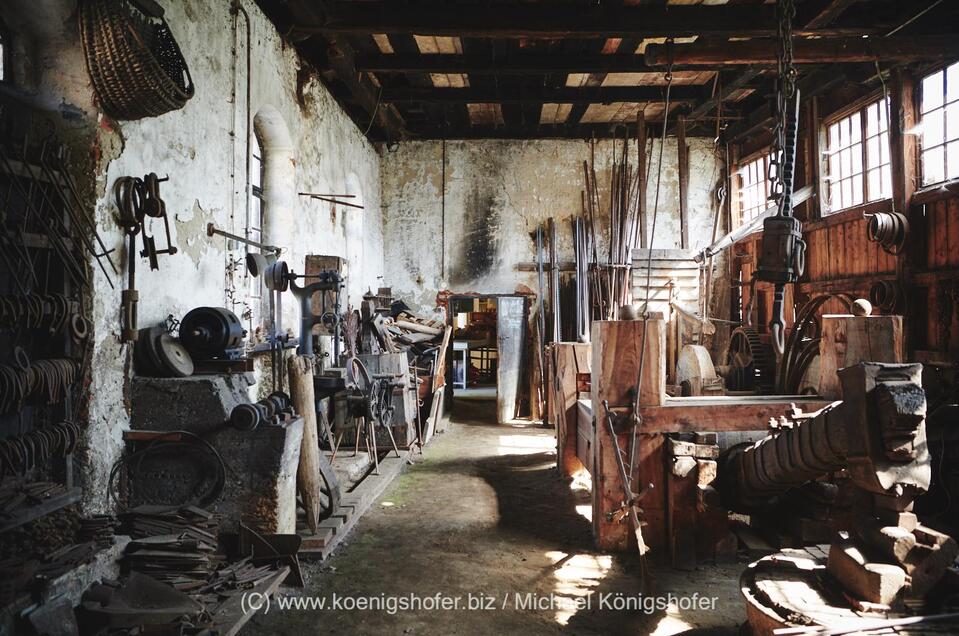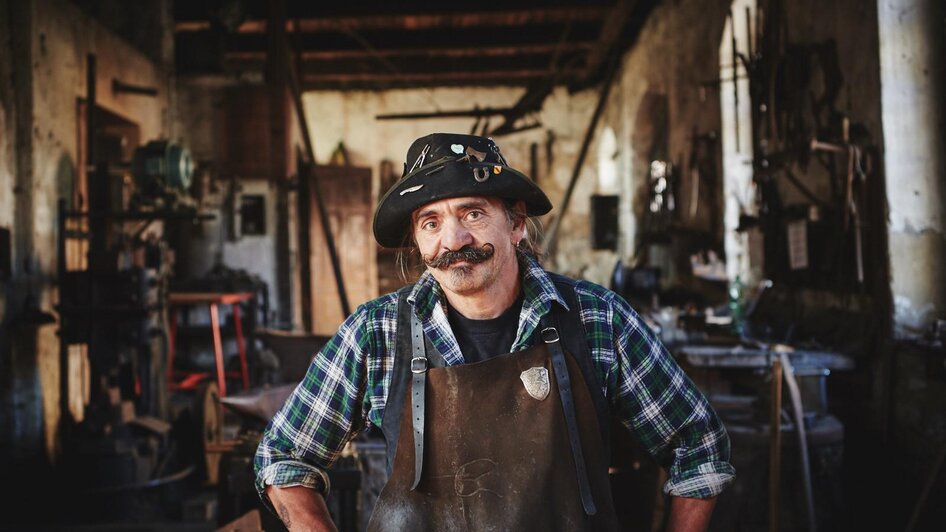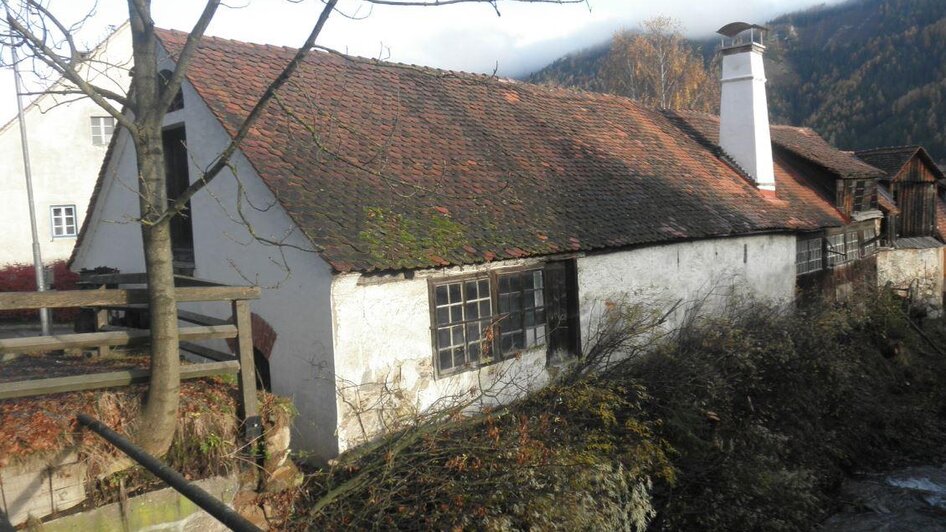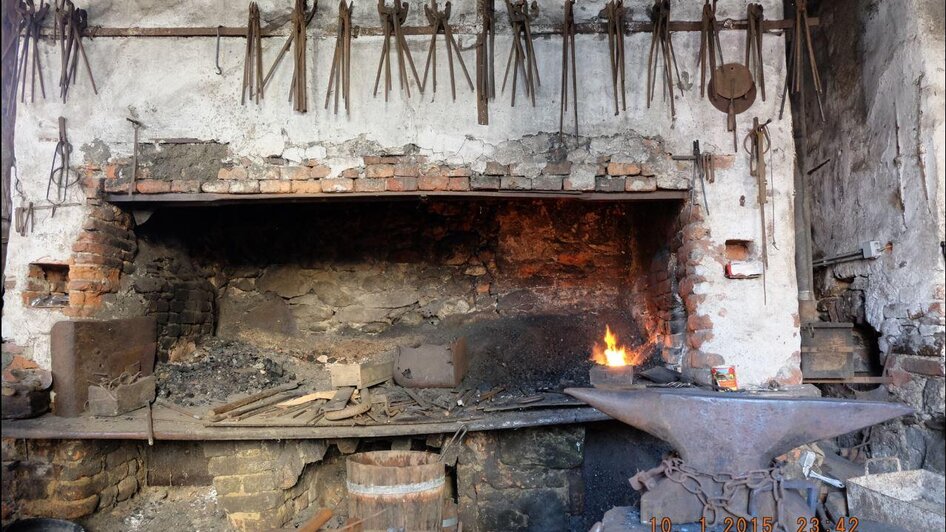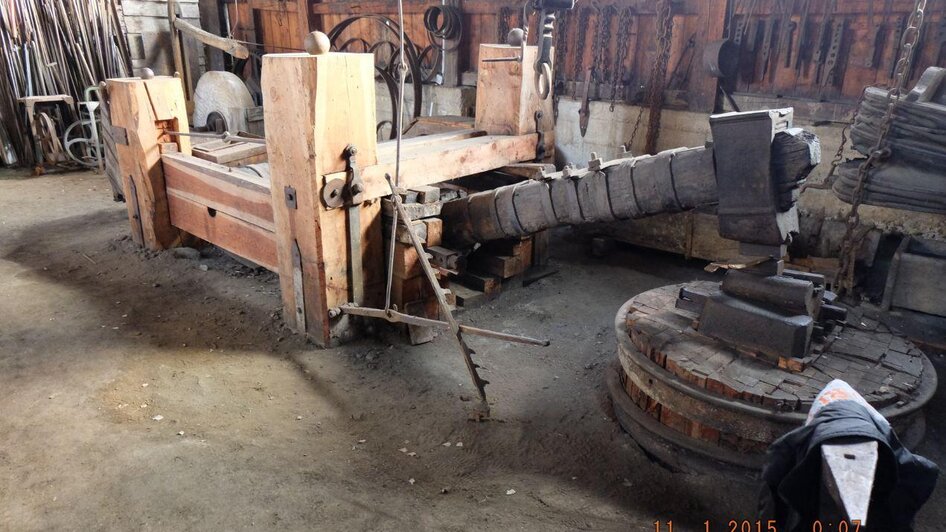Schmiedemuseum Furth
St. Peter ob JudenburgThe Furth smithy in Murtal is not only a place of iron craftsmanship, but also an important part of St. Peter's culture and history. From its historic beginnings as a smithy near the tavern to today's lovingly restored workshop, where traditional blacksmithing meets contemporary art, it tells a fascinating story.
The Furth Forge is not only a place where iron was processed into various forms, much more it is a part of St. Peter's culture and history. Where once various people from the surrounding area benefited from the blacksmith's skills, today visitors enjoy a lovingly restored workshop where contemporary art meets traditional blacksmithing.
The forge was first mentioned in 1267 as a "tavern at da bruggn" with a "hammer" and a "hofstadt". This first written reference points to a forge at the inn "Taverne bei da bruggn" with a yard. In 1537 Leonhard Furtner, subject of the St. Peter validity, was mentioned as the owner of the hammer and thus of the forge. Historical records show that in 1597 the "Hufschmiede am Furth" became the property of the church of St. Peter.
The representation of the castle rights of Mrs. Katharina Furtnerin was taken over by the Zechpröpsten of the parish. Katharina married for the second time Veit Veichtinger, the landlord of Furth. After his death she transferred the forge to her son-in-law Michael Paller.
In 1646 the forge was plundered by passing mercenaries. They stole all the ironwork. In addition, there was a major fire.
In 1655, the blacksmith Simon Straucher bought the property, which had been badly damaged after the fire and was now completely impoverished. In 1695, Simon Straucher's widow sells the smithy to the blacksmith Josef Säringer, who calls himself "Huf und Wagenschmied" for the first time. In the following years there is an economic upswing and the once burnt ruin has become a flourishing business.
In 1732 the Seiringer widow sells the forge to Simon Schleifer. After the successful years, harder times followed and the blacksmith and his son Simon and his heirs sold the forge with many debts.
In 1802 Simon Stangl acquires the blacksmith's shop, and it remains in his possession until August von Rabcewitz buys it in 1880. In 1926 the forge changes hands again. Francizek Kritz, an immigrant from Bohemia, acquired the forge. In 1946 his son Roman took over his father's business. Due to the subsequent motorization, the economic efficiency of the forge decreased more and more, which is why the forge was closed down in 1977. At that time Roman Kitz and Karoline Jetz, daughter of Franz Kritz, innkeeper in Hohentauern, were the owners of the forge. After the death of Karoline Jetz, the forge changed owners again.
In 2003, the Moscher family, led by Erich Moscher, took over the inheritance and restored the smithy to its former glory. The run-down and dusty forge became a museum with show forge performances and numerous other events.
Opening hours:
- Visits only by telephone agreement
Admission fee:
- Voluntary donation
Contact
Walter Dorfer
Furth 7
8755 St. Peter ob Judenburg
